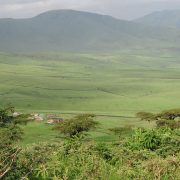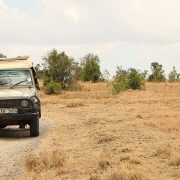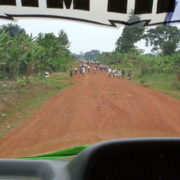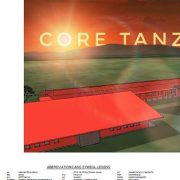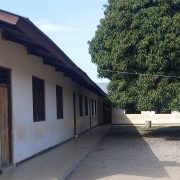Trip Update from Karatu
Our first day-and-a-half in Tanzania was very eventful! We arrived at the Kilimanjaro International Airport from Entebbe in the early afternoon on Monday January 29. After securing our rental car (a RAV4), changing money, and purchasing a telephone SIM card so we could make local phone calls (and also surviving the crazy traffic in Arusha!), we headed to Maasae Girls Secondary School in Monduli, where we had planned to spend the night. By the time we’d settled in and had dinner, it was already dark, but that didn’t stop the teacher who took us under her wing from giving us a lovely moonlight tour of the campus. One of the most notable physical features of Maasae Girls is that it is built to resemble a typical Maasae family compound, or boma. The chapel forms the central element, and other buildings are arranged around in a more-or-less circular fashion. (See the photo at the top of this post for an example.) Most of the individual buildings are circular or rectangular with rounded corners, reflecting the common Maasae building style.
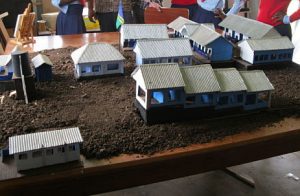
On Tuesday we had breakfast with our guest house neighbor–an eighty-eight-year-old Montana farmer who’s been coming to Monduli periodically over the past twenty years providing agricultural advice and training for the school. After a brief conversation with the headmaster, we left Maasae Girls School and took a fifteen-minute drive on a narrow bumpy dirt road to Orkeeswa Secondary School. Orkeeswa is located at a beautiful spot on a hill overlooking an expansive valley. The photo at the right shows a model of the school built by one of the students as an Art Club project.

Our student tour guides at Orkeeswa
We were given a thorough and very informative tour of the school by four upper level school students. We wondered at first why we would need four guides for the three of us, but soon discovered the reason. Our guides engaged us in individual conversation throughout the entire tour. In all our college tours in the U.S. I have never had such enthusiastic tour guides! Because they cannot provide education to all the students in the surrounding area, Orkeeswa has made a decision to choose the brightest and most promising applicants in hopes of educating future leaders for the country. The impression we got from these tour guides was that the school is succeeding in this mission. The girls were all very accomplished in their English, and were comfortable and confident speaking with strangers. We definitely got a sense these were girls with places to go! Bill asked one of them if there was anything that could have been improved about Orkeeswa School, and the only suggestion she gave was that students be taught in English before they reach secondary school–this helped us to feel we are on the right track choosing to use English at Twegashe Primary School.
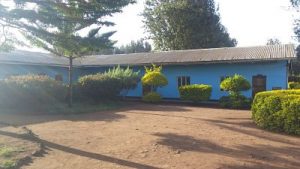
Gyetighi Primary School is co-managed by RVCV
Our next stop after Orkeeswa was the Rift Valley Children’s Village (RVCV), near the town of Karatu. The co-director of the Village, Peter Leon, said he would meet us in Karatu so we could follow him to the site. (We understood why he had suggested that once we turned off the main road and began the 45-minute drive on a narrow, badly-rutted dirt road with numerous possibilities for wrong turns.) RVCV provides a home and family for children who have no other home, overseeing their care and education from the time they arrive at the Village until they are successfully “launched” with means to support themselves. They currently have over 100 children under their guardianship, although many of them are off in boarding secondary schools or in college and only spend time at the Village during vacations and holidays. Each child lives in a family unit with a house “mama”, and they eat their meals there at a family table rather than in a cafeteria.
The Village has its own nursery school but once children reach school age they all attend the local government primary school, Gyetighi Primary. RVCV has a co-management agreement with this school, providing a great deal of financial support and in turn being allowed to participate in decisions about how the school is run. We’re wondering if this is something we might eventually want to pursue with the local government school in Bushasha.
We left the Children’s Village in the late afternoon and found our way back to the main road on our own (but not without first choosing one of the wrong-turn possibilities and being put back on the right track by a helpful local farmer). We reached our Karatu guesthouse just before dark. Our rental car agreement prohibits driving at night, and although we know this is for reasons of safety, every day as we hurried to make it to our destination before the early equatorial nightfall, we always wondered just a little bit whether our RAV4 might turn into a pumpkin if we didn’t make it on time!


